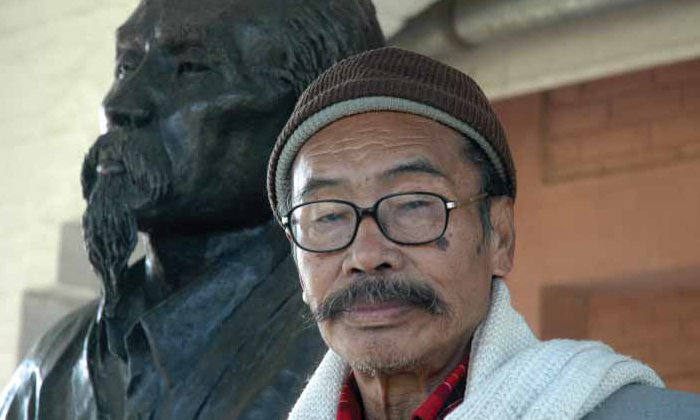Yet another economic blockade looms large over Manipur. At the time of writing this piece, the Imphal-Jiribaum Highway and the Imphal-Dimapur Highway have just recovered from the spectre of a strike by the Kuki State Demand Committee. With the Nagaland elections looming large in March 2013, the whiff of a new statehood movement regarding Eastern Nagaland and the fairly public 25th Raising Day celebrations of Kuki National Front at the Natheljang under Sadar Hills in Camp Ebenezer, the situation is indeed a tightrope walk.
It is time to look back at a remarkable essay by Lokendra Arambam (published by Manipur Research Forum, Delhi, Bulletin 1:4, December 2001) called ‘On Ethnicity, Conflict and Development in Manipur’.
Those who have any interest in north-east affairs, ranging from the lay person to the biased academic, should go back to the essay. In fact, if the essay can be read in conjunction with Arambam’s later piece ‘Land and territoriality in the Northeast- Politics of ethnicity and armed violence in Manipur’ (published in Sangai Express, August 2008 and later re-printed in e-pao), the key to the contours of conflict can be easily understood and analysed.
We revel in creating notions of exile. Be it personal or political. We, the know-alls, even aim our arrows against art as that is the softest target to create more exile and muffle more voices. And the notion of exile in art is both personal and universal at the same time. Of course, in art you have another temptation-give them some award, some Padmas, some Ratnas and shut them up. Or the even easier route is just arrest them or warn them enough for the respectful silence to descend. In politics of self-determination, both the kettle and liquid inside are so inextricably linked that you cannot sift through the content and successfully knit a divide-and-rule narrative without leaving deep gashes and wounds on memory.
What then would be memory in such times of globalised ambiguities and the marketing juggernaut that sell impermanence? Where is the space for the eccentric, the thin voices from the thinner margins, and the already endangered tribe of dissenters? Who eats these people up for breakfast, lunch and dinner?
Arambam’s twin essays exhort us to go beyond this neo-colonial imagination of insurgent and resurgent nation state. In this conception, we create secular balance, linguisitic balance, fascist balance, market balance, majority balance with a nod to the minority but forget to look at an independent policy for the indigenous and the tribal mindset.
Arambam’s essays look at the Metei and the Kuki landscapes of memory and draw a historic analysis of both, their geographical displacement and the rupture of memory, exhorting us to attempt a skewed convergence. Where the convergence is neither an attempt to standardize cultures or buying and selling of silence but a convergence of field reports that would allow us to view different perspectives.
“A time has come for us to dip into the essays (all are available on the digital platform of worldwide web), download them, get them spirally bound and have our own book.”
We have to remember that this is a region, which has seen not only the draconian side of the Armed Forces Special Power Act (1958) but also the lack of initiative by policymakers to usher in livelihood and industrial solutions. Painful memories abound in this terrain. Of Yangkeli Baptist Church mass rape, of Rose Manchui, who, on March 4, 1974, was allegedly raped by Major Bondir and Captain Negi in Khuram-Ukhrul district… two days later she committed suicide. Then the much discussed Thangjam Manorama incident at Bamon Kampu, Mayai Leika, Irilbung. The 32-year old had been sexually assaulted, raped and then clinically murdered with six bullet injuries including one shot through the vagina.
There is also a growing list of children who have died in questionable encounter killings. Two such recent cases exemplify the point. The encounter of three children namely, Kamkholal Haokip (17 years and Class X student), his younger brother Sumkhosat Haokip (15 years) and Satkholun Haokip (15 years) in an alleged encounter with Assam Rifles at Sipijang area in Senapati. On January 11, 2005, Saikhom Samungou (20 years), Sanasam Ngongo Meitei (15 years) and Thiyam Sunder (23 years) were killed in an alleged encounter at the Yairipok area of Thoubal district.
In the light of this comes the question. Can military deterrent be effective? Should not land and territorial claims also include livelihood mapping? And how can these be done in the climate of low-intensity and high intensity violence. Can childhood be dominated by the images of assault rifles?
These embedded questions come to the fore as Arambam unpeels the layers of both the armed and the development dogmas one by one. Arambam wears many hats. And one of them is that of a theatre director. His productions have taken place on water, on tankers in Brahmapurta, on proscenium stage and even on a parking space. I would think that the real surface, where Arambam succeeds much more than the stagecraft of Thiyam, a sense of ritual of Ebotombi and the sparseness of Kanhailal, is the polemics that he brings to the work. You cannot be an artist on air, land, water, tanker or in Loktak Lake, if your engagement with politics of rhetoric and political rhetoric is absent. Documentation or performance of ritual without palpable political undertones becomes merely an exhibit and not a dialogue with memory. You cannot add artefacts to the cultural warehouse, you need to disseminate its democratic place in polity and that is where Arambam’s essays need to be read and I would like to think even performed.
Between those nine hills and one valley: some notes on backdrop
As a unique geographical and cultural entity and a mindset that oscillates between the culture of royalty and the sub-culture of peasant fight backs, the creation of Manipur dates back to over 2000 years and after many twist and turns of the landscape, the nine hills and one valley became a state in the union of India in 1972.
For the record, more than half of the population is that of the Meiteis, a majority ethnic group and the rest include a little more than thirty different tribes. The list of tribes includes Nagas, Kukis, Paites, Hmars, Thadous, Raltes, Simtes, and Gangtes(amongst others).
Secessionist tendencies began to surface, as a result, and this led to the coming into existence of many separatist ideologues and groups. The exclusion of Manipur in social imagination, in linguistic and cultural imagination only accentuated the problem.
The early mover among these groups was the United National Liberation Front (UNLF) which came into existence in 1964 with a demand for an independent state within a socialist imagination. The group led by Arambam Samorendra (an important cultural theorist and a legendary playwright) started off as an ideological movement and openly debated the pros and cons of the constant efforts by the nation state to standardise the distinctive regional culture. In the 1980s, the group took to arms and their dialectics took another turn, especially on the issue whether they should consolidate their ideology before getting into armed conflict or move head-on towards conflict. Samorendra, who bowed out voluntarily from the activities of the group preferred to first raise awareness about the ideological parameters of the conflict before taking the armed pathways.
Another significant group was the Revolutionary Government of Manipur (RGM) that enforced the agenda of liberation of Manipur through armed struggle. The group was headed by Oinam Sudhir Kumar and its formation opened the floodgates for smaller groups to establish their fledgling voices. The schisms between the state and the non-state players widened.
In spite and despite all this, the Meitei-led secessionist movement gradually began to weaken due to twofold reasons. First: the Bangladesh Liberation War in 1971 and second, the increasing authority of the central government in the affairs of the state.
The year 1978 became significant as People’s Liberation Army (PLA) was born and the fledgling voices got a shot in the arm. The group was not only trained in guerrilla warfare but also adopted the ideological praxis of being part-nationalist and part-Maoist. A glut of independent outfits began to surface, re-organise and further consolidate.
Some of the prominent groups among them were People’s Revolutionary Party of Kangleipak (PREPAK) and Kangleipak Communist Party (KCP). All this did not consolidate the dissent but also degenerated into splinter groups that functioned as an organised racket of extortions, looting, arson and other such activities.
The central questions of territoriality thus got stuck in the rhetoric of statehood and nationhood without looking at the cultural consolidation of practices. All this became a personal agenda, something that a revolutionary like Hijam Irabot abhorred and consistently fought against. What we did not learn from Irabot is the fact that tribalism as means of resistance is different from tribalism perpetrated by larger tribal groups to marginalise other fringe tribals. The Meitei chauvinism sometimes overrides every other identity in Manipur and that has set back the unification of fringe voices leading to a deep hill-plain divide (where the hill identity has also been equally used as a divisive force).
Juxtaposed with all this is the spectre of Armed Forces (Special Powers) Act, 1958. The act that was meant to be enforced for a period of just one year has been a constant in the life and times of the nine hills and one valley.
A time has come for us to dip into the essays (all are available on the digital platform of worldwide web), download them, get them spirally bound and have our own book. Read Arambam and locate the contours of a geography that you may claim to have heard of but hardly know.
Arambam begins one of his essays with this line from the ancient texts of the Meiteis: When the ancestor serpent-dragon rides on the aroused hillsmen formations of the North and unleashes its fury, disaster shall befall this region.
It is still time to avert the disaster.














